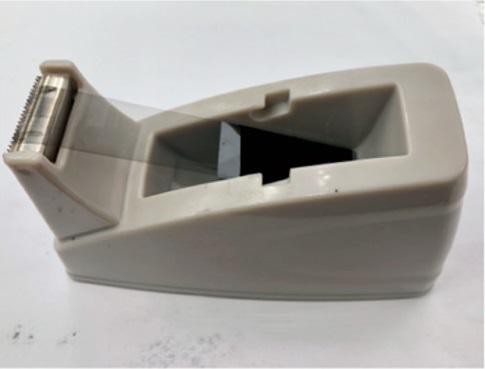Jul 11 2019
Regular tapes lose their stickiness and leave behind a disturbing residue in very cold or hot environments. Although a majority of the people can avoid placing taped items in a freezer or hot car, those who live in extreme conditions like the Antarctic and deserts usually cannot prevent such environments.
 A new type of nanomaterial tape, shown here mounted in a conventional tape dispenser, sticks strongly to surfaces over a wide range of temperatures. (Image credit: Adapted from Nano Letters 2019, DOI: 10.1021/acs.nanolett.9b01629)
A new type of nanomaterial tape, shown here mounted in a conventional tape dispenser, sticks strongly to surfaces over a wide range of temperatures. (Image credit: Adapted from Nano Letters 2019, DOI: 10.1021/acs.nanolett.9b01629)
Currently, scientists have reported the development of a new nanomaterial tape with the ability to function over an extensive temperature range in Nano Letters, an ACS journal.
In an earlier study, researchers investigated the use of nanomaterials like vertically aligned multi-walled carbon nanotubes (VA-MWNTs) to create optimized adhesive tapes. VA-MWNTs are stronger than traditional tapes at low as well as high temperatures, but they are comparatively thick and cannot be produced cost-effectively in large amounts.
Kai Liu, Xide Li, Wenhui Duan, Kaili Jiang, and colleagues wondered whether it is possible to develop an innovative kind of tape formed of superaligned carbon nanotube (SACNT) films. As the name indicates, SACNTs are nanotubes exactly aligned parallel to one another, with the potential to form ultrathin yet strong films or yarns.
The researchers made the tape by pulling a film from the inner side of an array of SACNTs—analogous to pulling a strip of tape from a roll. The ensuing double-sided tape could attach to surfaces via van der Waals interactions—weak electric forces produced between two molecules or atoms located close together.
The performance of the flexible, ultra-lightweight, and ultrathin tape surpassed that of the traditional adhesives, at temperatures varying from −321 °F to 1,832 °F. The researchers were able to remove the tape by soaking it in acetone, peeling it off, or burning it, with no noticeable residues. Although the tape attached to various different materials like plastics, metals, ceramics, and nonmetals, it adhered more strongly to smooth compared to rough surfaces, analogous to conventional tape.
It is possible to produce the SACNT tape on a large scale in a cost-effective manner. Apart from performing well in harsh environments, the new tape could be applicable to electronic components that heat up upon use, stated the researchers.
Funding from the National Key Research and Development Program of China, theNational Natural Science Foundation of China, and the Beijing Advanced Innovation Center for Future Chip is acknowledged by the authors.